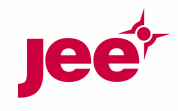What does your company do and where does it fit in the overall ‘subsea integrity management’ process?
Jee provides both management of and technical support to our client’s subsea integrity management (IM) schemes.
For some of our offshore oil and gas operator clients, this involves Jee providing a team that integrates with their own team to manage the IM scheme, and provide all necessary technical input. Other clients require us to supply specialist technical services and support for specific projects or technical assessments.
The services we are currently providing to clients include:
- Preparation of subsea integrity management schemes
- Management of schemes including risk based inspection planning, preparation of inspection scopes, specifications, reporting criteria and workpacks for subsea and topsides, surveys and inspections, assessment of survey and inspection data, identification and assessment of anomalies, specification of remedial work, preparation of technical integrity assessments, maintenance and update of key documentation and liaison with regulatory bodies
- Corrosion management strategies, monitoring and assessment
- Detailed assessments and analysis of integrity issues
- Design of repairs
- Management of in-line inspection programmes
- Support on operational pigging
What do you see as the main challenges in the industry?
In many cases, the infrastructure and the facilities in the North Sea are operating beyond their original design life. Therefore, coatings and systems that were designed for a 20 to 25-year life are now up to 45 years old, and some are even older than that.
Managing the integrity of ageing assets in a cost-effective way is one of the major issues facing the industry today. Engineers and designers in the early days of offshore North Sea exploration could be forgiven for not anticipating the difficulty of detecting concealed corrosion in 2014, or the risk of water ingress under pipework insulation on assets that are still in use more than four decades after installation.
As assets age, the likelihood of integrity issues, anomalies and defects increase. Alongside this, unfortunately, production revenues generally fall significantly as the reservoirs deplete. The cost of operating an effective integrity management system is therefore likely to increase, whilst the revenue is decreasing.
What do you see as the solution?
The first step in life extension is to understand as much as possible about the current condition of the asset. That in itself is not always straightforward, because you cannot always see what it is that you want to assess, for example, internal corrosion in a pipeline. Techniques exist, but you can’t always use them. In those cases, you have to take a more risk-based approach. You have to assess the likely degradation, and apply tolerances and safety factors to that to help manage the risk.
The implementation of lifetime extension programmes that clearly identify the integrity implications of operating a subsea system or pipeline beyond the original design intent can also help to manage the integrity of ageing assets. By understanding the risks of extended operation, it is possible to optimise the inspection and maintenance requirements for a system and, therefore, optimise operating expenditure.
What initiatives are being done to solve these challenges?
Jee has been instrumental in the preparation of rigorous methods for the assessment of lifetime extension and the preparation of standards defining these.
Subsea inspection techniques have been improved with acoustic methods giving improved resolution and accuracy. There are further developments of acoustic survey techniques, such as Multi Beam Echo Sounders which allow detailed 3D surveys of subsea equipment, pipelines and the seabed topography to be gathered rapidly. Topsides inspection methods such as Long Range Ultrasonic Testing are also being adapted for subsea use, deployed by Remotely Operating Vehicles (ROVs). These all allow for faster inspections and more information to be gathered, allowing better assessment of integrity.
The technological development of autonomous vehicles for pipeline surveys and inspections in deepwater applications where umbilicals limit operability of traditional ROVs, is now being applied to small, low-cost autonomous vehicles for shallow water use. These vehicles can be beach-launched to survey near shore pipelines without the need for a large support vessel, saving time and money for the client.
Where do you see the industry heading? What will be the norm in five years?
There are financial pressures to keep producing assets on line longer, but the rehabilitations often necessary to do so can be lengthy, expensive and disruptive to normal operations. I feel an effective data management program needs to be implemented as a norm to help operators avoid overreacting to problems, or overlooking them in a push to maintain production.
There is always pressure to keep things running, but operators have learned a more pragmatic approach to asset integrity issues – respond rapidly, review the situation and determine if the risks are manageable and if it is safe to continue – works better in the long term.
My experience of the industry is that risk management and safety are very high on the agenda and, therefore, integrity issues that could affect safety are dealt with promptly and adequate resources put in place. I think this is an area where the industry does not try to skimp.
The North Sea is, however, continuing into old age with more facilities passing intended design life. Decommissioning of assets needs to continue or increase, but this is all dependent on tax structure. Ageing assets often still have significant recoverable reserves, but it is uneconomical to produce under current taxation regimes. In my opinion, changes to taxation for ageing assets is necessary to make continued operations viable.
For more information, please contact Jee.

